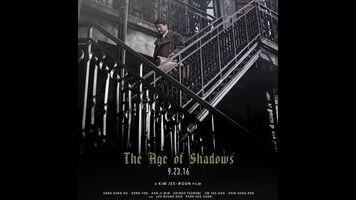For a large chunk of its running time, The Age Of Shadows plays as a three-way battle of wits involving Capt. Lee (the great Song Kang-ho), a world-weary Korean officer in the Japanese police; Woo-jin (Gong Yoo), the leader of the militant anti-Japanese cell that Lee has been ordered to take down; and Hashimoto (Um Tae-goo), a hotheaded young Japanese officer who’s competing against Lee to catch Woo-jin’s group before they smuggle explosives supplied by sympathetic Hungarian anarchists out of Shanghai. While the notion of a cop and perp who could be friends under different circumstances is nothing fresh, The Age Of Shadows puts its own spin on it. From the moment Lee introduces himself to Woo-jin, an antiques dealer and portrait photographer, under the guise of selling a statue recovered from a shoot-out, each drops hints that he might be willing to switch sides while trying to figure out whether the other will do the same—an intricate social game that begins with a long night out in which neither man is as drunk as he pretends to be. (Think the careful realpolitik of a John Le Carré spy thriller, but relocated to South Korea, the single booziest national cinema on the planet.)
The more muted, earth-toned palette created here by Kim and cinematographer Kim Ji-Yong (who previously collaborated with the director on A Bittersweet Life and The Last Stand) makes one miss the saturated colors of Lee Mo-gae’s work on I Saw The Devil, which could get as garish as an Italian giallo. But despite some attempts at imitating a more classical visual style, with old-fashioned dissolves often linking scenes, The Age Of Shadows is still the work of a fiendish and outrageous filmmaker. It’s hard not to crack a smile at a movie that subtitles Morse code telegraph transmissions, relishes disorienting sound effects, or makes novel use of smash zooms. The shoot-outs between cell members and police swarm with mayhem, while Kim’s taste for all things grotesque pushes the movie into extremes of expression, including body horror. The director is about as squeamish as a medieval field surgeon, but never does anything without a reason; here, emaciated, lacerated, and tortured bodies represent internal conflicts, substituting the stomach-churning for the morally queasy.
The pièce de résistance is a nearly 30-minute train sequence, which allows Kim to (very literally) compartmentalize the plot and action. It gets Lee, Hashimoto, and all of the members of Woo-jin’s group into the same space, but breaks it up into smaller enclosures to develop escape plans, secret agendas, and betrayals. In the longstanding tradition of the passenger train as microcosm, The Age Of Shadows shuttles between the cramped third-class compartments to the almost empty dining car—as much a social metaphor as an extended suspense set piece. In the hands of a different filmmaker, the train sequence might be the climax of the film; it ends on a note that feels final. But Kim puts it smack dab in the middle of this fairly long movie, as just one of several narrative gambits.
For obvious reasons, Kim’s sympathies lie with Woo-jin and his group’s bloody campaign against the Japanese government, who are drawn more cartoonishly than, say, the Nazi occupation in a French Resistance thriller. (There’s a scene where Hashimoto berates an underling that contains the most face-slapping ever captured in a single take.) The mutations and transfers of the narrative are purposeful—including the choice to turn one of the most active characters into a purely reactive presence, self-silenced after having bitten off his own tongue—though they come at the expense of consistency and sometimes urgency. It’s hard to keep up an even pace with a plot that’s meant to become more diffuse as it goes on. But Kim’s preference for exteriorizing all of his character’s suspicions and turmoil—for making the internal into something more graphic by transferring its energy into bullets, wounds, and time bombs—gives it a sensational, two-fisted flavor.

